How do museums collect and record memories?
We sure do have some amazing collection items. Take a look at the role that museums have in our lives, the reasons why we collect what we collect, and create your own Museum of Us.
Activity: What is the role of a museum?
Consider the role of Museum of New Zealand Te Papa Tongarewa.
Te Papa Tongarewa translates to ‘container of treasures’, which is an apt description for a museum considered the home to the stories of Aotearoa New Zealand.
Ask your friends what they think a museum is for. Gather everyone’s answers together and see if there are any common themes.
Go to your nearest museum, or call them on Zoom, and ask them what their role is. Gather this answer together and see if this adds any further information to your understanding of what a museum is for.
Write a sentence or two explaining what museums are for.
As the national museum, we have a number of roles. Take a look around our website, how do we describe ourselves?
Is there anything you want to add or change in your sentence about what museums are for?
Portrait gallery in Toi Art, 2018. Photo by Kate Whitley. Te Papa (106646)
Activity: How do you collect the memory of all that has been?
Explore the ways in which social history collections are made.
We have over two million items. You can search 700,000 through our Collections Online. Humanities curators at Te Papa look after about 325,000 items.
A curator is someone who looks after a part of the museum collection. There are lots of jobs in a curator’s day. They share the collection with the public through exhibitions and through researching and sharing the collection’s important stories. Curators also research and acquire new items that reflect the story of our nation, as it happens. This is a very rewarding job.
In the New Zealand histories and cultures collection, sometimes it is not the object, but the story that goes with the object, that makes it so very special. There are a number of really fascinating collection items that are like this, in the protest collection. Can you guess which of these items are collection items at Te Papa?
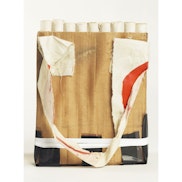 Some old cardboard tubes, wrapped in some tatty cardboard? | 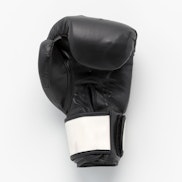 A boxing glove? |
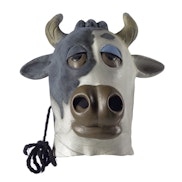 A rubber cow’s head mask? | 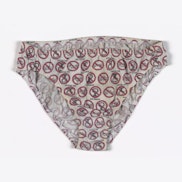 A pair of undies? |
 A crusty old typewriter? | 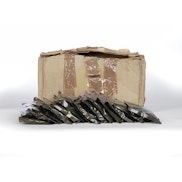 A box of dehydrated food? |
Activity: Museum of Us
Curate your own exhibition.
Reflect on your own life. If you were a curator, what items from your life would you collect to create a museum exhibition? What everyday items from your life would you choose to photograph, collect, or store to tell the story of:
a loved one, such as a grandparent
your culture, heritage, and language
a meaningful place that you love to go to
a treasured memory, such as a birthday or holiday.
Develop an installation for others to view. This could be a physical space, such as an exhibition, or a digital space, such as a slideshow or a simple website or gallery.
Exhibit the items carefully, with a written or recorded statement explaining each item’s significance. You may like to add a space for the audience who view your exhibition to write their own thoughts about what they saw.
Activity: Why does Te Papa hold a chainsaw?
Deep-dive into an unlikely taonga in our collection.
Te Papa only has one chainsaw in its collection. Explore the compelling story behind why it is now in our national museum.
In the early 1990s, the National government suggested that all Treaty settlements have a time-bound monetary limit, what was called a ‘fiscal envelope’. The promises of tino rangatiratanga that were agreed to within Te Tiriti were being ignored. You may want to explore Why is Te Tiriti justice so important? to understand the significance of this.
For many years, a lone Monterey Pine stood atop Maungakiekie, one of the volcanoes in Tāmaki Makaurau. In English, it was known as One Tree Hill.
Watch this short documentary about the protest action that took place in response to the government’s policy direction:
In 1996, the government announced it would not pursue the idea of a fiscal envelope.
In 2016, the Tūpuna Maunga Authority planted a grove of tōtara and pōhutukawa on the same spot. The intention is that a single tree will ultimately remain when it is able to survive on its own.
Discuss together:
|
Extra links for the extra curious
Go down amazing wormholes with this curated suite of links.
Objects of resistance, persistence, and defiance – browse Te Papa’s entire protest collection; over 844 collection items that reflect our protest history from before 1840 to now.
Behind the scenes in 360 degrees –- Te Papa’s collection stores are some of our most precious spaces. Only a small part of what we do as a museum is visible to the public. Most of the work we do takes place behind the scenes and is invisible to pretty much everyone – including most of our staff, most of the time. Looking into these areas is a real treat.
10 things you might not know about Te Papa – go behind the scenes and discover some of our lesser known secrets.
The pen that was used to highlight police racism | The Single Object – watch the fascinating story of a pen, an arrest and police racism. (The Spinoff on YouTube)
The Case for Museums – what purpose did museums serve? And why does every city have one today? (PBS on YouTube)
Why we need museums now more than ever – an opinion piece on the crucial need for museums at this moment in time. (MuseumNext)
Countering stereotypes through co-collecting – read about this co-collecting initiative where Tongan students considered what truly represented them and countered stereotypical representations.
Trans Past, Trans Present – trans people from their teens to their 70s were asked to identify objects of personal importance and to share the objects’ stories. What emerged was a quirky collection that is a testament to the diversity of trans experiences.